Are you a cat owner who wants to ensure the best possible health for your furry friend? One important consideration is the type of food you choose to feed them. Wet and dry cat food are both popular options, but which one is better?
This article will explore the nutritional differences between wet and dry cat food, as well as the pros and cons of each. By the end, you’ll have the information you need to make an informed decision about what to feed your feline friend.
When it comes to feeding your cat, there’s a lot to consider. You want to make sure they’re getting all the nutrients they need to stay healthy and happy. But with so many options on the market, it can be tough to know where to start.
That’s where we come in. We’ll break down the differences between wet and dry cat food, so you can make the best choice for your cat’s individual needs. Whether you’re a new cat owner or a seasoned pro, this article has something for everyone.
So let’s dive in and learn more about wet vs dry cat food.
Key Takeaways
– Wet cat food has higher moisture content and protein, and can be easier to digest for cats with sensitive stomachs or dental issues.
– Dry cat food can promote dental health, has a longer shelf life, and is more cost-effective than wet food.
– Age, activity level, and health condition should be considered when choosing cat food, and consulting with a veterinarian can help make the best choice for a cat’s individual needs.
– Personalized advice from a veterinarian can help determine the best type of food for a cat’s individual needs, and monitoring a cat’s health and behavior is important to ensure they’re adjusting well to a new diet.
Understanding the Nutritional Differences Between Wet and Dry Cat Food
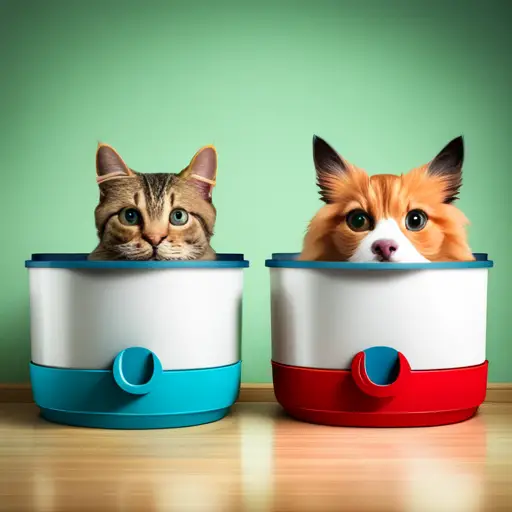
You’ll be surprised by how much your cat’s health can benefit from understanding the differences between wet and dry cat food. One of the most significant differences is nutritional value. Wet cat food typically has a higher moisture content, which can be beneficial for cats who don’t drink enough water. It’s also generally higher in protein and lower in carbohydrates than dry food, which is important for maintaining your cat’s overall health.
Another factor to consider is how each type of food affects your cat’s digestive system. Wet cat food may be easier for some cats to digest, especially those with sensitive stomachs or dental issues. On the other hand, dry cat food can help promote dental health by keeping your cat’s teeth clean and strong.
Ultimately, the decision between wet and dry food depends on your cat’s individual needs. Consulting with your veterinarian can help you make the best choice for your furry friend.
Pros and Cons of Wet Cat Food
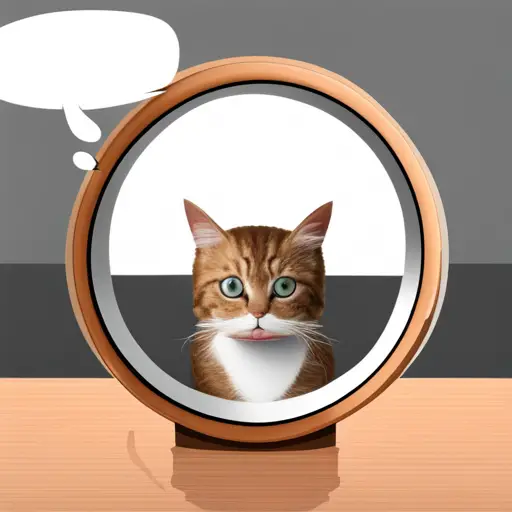
If you’re looking for a way to provide your feline friend with a more varied and flavorful diet, wet cat food is worth considering. One of the main benefits of wet food is the texture. Cats love the moist and juicy texture of wet food, which can make mealtime more enjoyable for them.
Furthermore, the added moisture in wet food can provide hydration benefits, especially for cats that don’t drink enough water or have kidney issues. On the downside, wet cat food has a higher likelihood of spoiling and needs to be refrigerated after opening. This can be a hassle if you’re used to leaving food out all day for your cat to nibble on.
Additionally, wet food can be more expensive than dry food, and some cats may not like certain flavors or textures. However, if you’re willing to put in the effort to handle the storage and extra cost, incorporating wet food into your cat’s diet can be a great way to give them a more varied and flavorful diet, while also providing hydration benefits.
Pros and Cons of Dry Cat Food
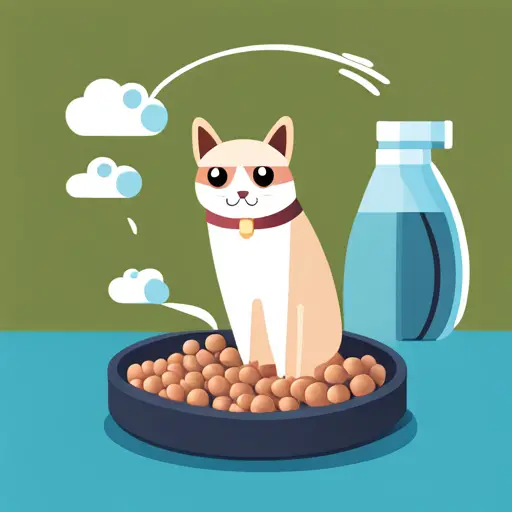
If you’re looking for a convenient and long-lasting option for your cat’s diet, dry cat food might be the way to go. This type of food has a lower moisture content which means it can be stored for longer periods of time without spoiling.
In addition, the crunchy texture of dry cat food can help promote healthy dental hygiene by reducing plaque buildup.
Convenient and Long Shelf Life
Ironically, while dry cat food may seem more convenient with its long shelf life, it can actually lead to health issues for your feline friend. Yes, you’ve read that right. Dry cat food may have a longer shelf life, but it’s not always the best option for your cat’s health.
While dry cat food does have its advantages, such as storage options and nutritional value, it’s important to consider the cons as well. One of the main issues with dry cat food is that it lacks moisture. Cats are known to have a low thirst drive, which means they often don’t drink enough water on their own. This can lead to dehydration and even urinary tract problems.
Additionally, dry cat food can be highly processed and lacking in essential nutrients. So, while it may be convenient to store and serve, it may not be the best option for your cat’s overall health and well-being.
Promotes Dental Health
Not only does it keep your cat’s tummy full, but incorporating dry kibble into their diet can also help scrape away plaque and tartar buildup, promoting healthier teeth and gums. However, it’s important to note that dry food alone may not be enough to maintain your cat’s dental hygiene.
To fully promote dental health, consider adding dental treats or incorporating brushing routines into your feline’s daily routine. Feline dental diseases are common and can lead to serious health issues, which is why it’s important to take preventative measures.
Investing in dental health products, such as dental toys and dental chews, can help keep your cat’s teeth strong and healthy. Additionally, scheduling regular dental check ups and cleanings with your veterinarian, as well as considering dental health insurance, can help catch and prevent any potential dental issues before they become serious.
Incorporating dental friendly diets and treats into your cat’s routine can also play a role in maintaining their dental hygiene. By taking these simple steps, you can help ensure your feline friend has a happy, healthy smile for years to come.
Lower Moisture Content
One downside to incorporating dry kibble into your cat’s diet is that it typically has a lower moisture content, which can lead to dehydration and urinary tract issues. This is because cats have high hydration requirements and depend on their food to meet a significant portion of their daily water intake. If your cat doesn’t drink enough water, they may become dehydrated which can lead to a host of health problems.
Additionally, low moisture content in dry kibble can cause urinary tract issues, which can be painful and potentially life-threatening for your feline friend. To ensure your cat maintains optimal hydration levels and urinary tract health, consider incorporating wet food into their diet. Wet food typically has a higher moisture content, which can help keep your cat hydrated and reduce their risk of developing urinary tract problems.
Offering your cat wet food can also provide them with a more varied and nutrient-dense diet, as many wet foods are formulated to provide a balance of protein, fat, and carbohydrates. By prioritizing your cat’s hydration and urinary tract health, you can help them live a long and healthy life.
– Provide your cat with wet food to increase their daily water intake.
– Low moisture content in dry kibble can lead to dehydration and urinary tract issues.
– Cats have high hydration requirements and depend on their food to meet a significant portion of their daily water intake.
– Wet food can provide your cat with a varied and nutrient-dense diet.
Considering Your Cat’s Individual Needs and Preferences
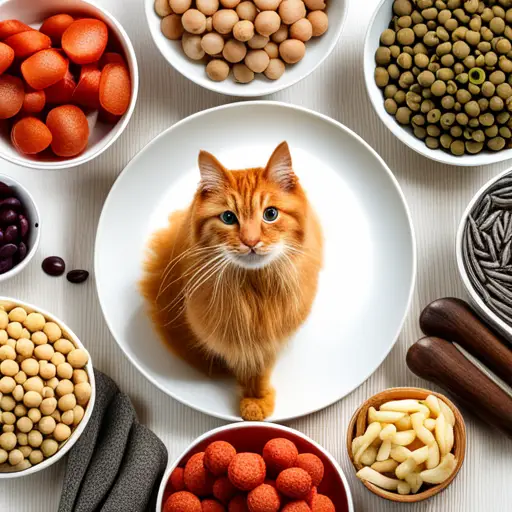
When it comes to choosing the right cat food, it’s important to consider your feline friend’s individual needs and preferences. Age, activity level, and health condition are all important factors to take into account.
Additionally, taste and texture preferences, as well as cost and convenience, should also be considered when selecting the best food for your cat.
By taking all of these factors into consideration, you can ensure that your cat is getting the proper nutrition they need to thrive.
Age, Activity Level, and Health Condition
Depending on your cat’s age, activity level, and health condition, you may want to consider wet or dry cat food for their diet.
For example, if your cat is a kitten, they may benefit more from wet food because it provides them with the necessary hydration they need. On the other hand, if your cat is an adult or senior cat, you may want to consider dry food as it can help maintain their dental health.
Your cat’s activity level can also play a role in determining their food preference. If your cat is more active, they may need a higher protein diet, which can be found in dry food. Conversely, if your cat is less active and spends most of their time sleeping, they may benefit more from the moisture found in wet food.
Lastly, if your cat has any health conditions, such as diabetes or kidney disease, their veterinarian may recommend a certain cat food variety and feeding schedule to help manage their condition.
Taste and Texture Preferences
Discovering what flavors and textures your kitty craves is essential for keeping them happy and satisfied with their diet. Just like humans, cats have their own unique taste and texture preferences when it comes to food.
Some may prefer fish flavors, while others may prefer poultry or beef. Texture also plays a crucial role – some cats may prefer wet food with a smooth consistency, while others may enjoy the crunch of dry kibble.
To cater to your cat’s preferences, palatability studies have been conducted to determine which flavors and textures are most appealing to felines. These studies have shown that cats have a strong preference for moist and meaty foods with a strong aroma.
Additionally, cats tend to prefer a variety of flavors and textures, so it’s important to switch up their diet occasionally to prevent boredom. By taking the time to understand your cat’s flavor and texture preferences, you can ensure that they are receiving a diet that they truly enjoy and will eagerly devour.
Cost and Convenience
Ironically, sometimes the most cost-effective and convenient option for feeding your furry companion may not be the healthiest choice. When it comes to choosing between wet and dry cat food, cost and convenience are important factors to consider. Dry cat food tends to be more cost-effective and has a longer shelf life, making it easier to store in bulk. On the other hand, wet cat food can be more expensive and requires refrigeration after opening, which can limit storage options.
To get a better understanding of the cost and convenience differences between wet and dry cat food, take a look at the table below. It compares the average cost and storage options for a popular brand of wet and dry cat food. Keep in mind that prices and storage options may vary depending on the brand and location, but this table provides a general idea of what to expect. Ultimately, it’s up to you to weigh the cost and convenience factors against the health benefits of each option to determine what’s best for your feline friend.
| Wet Cat Food | Dry Cat Food | |
|---|---|---|
| ——– | ————- | ————– |
| Cost | $1.50/can | $0.50/cup |
| Storage | Refrigerate | Room Temp |
As you can see, wet cat food is more expensive than dry cat food and requires refrigeration after opening. However, it may be worth the extra cost and storage hassle if your cat has health issues that require a wet food diet. Dry cat food is a more cost-effective and convenient option, but be sure to store it properly to prevent it from going stale or losing its nutritional value. Ultimately, the choice between wet and dry cat food comes down to what works best for you and your furry companion.
Making the Decision: Wet, Dry, or a Combination of Both?
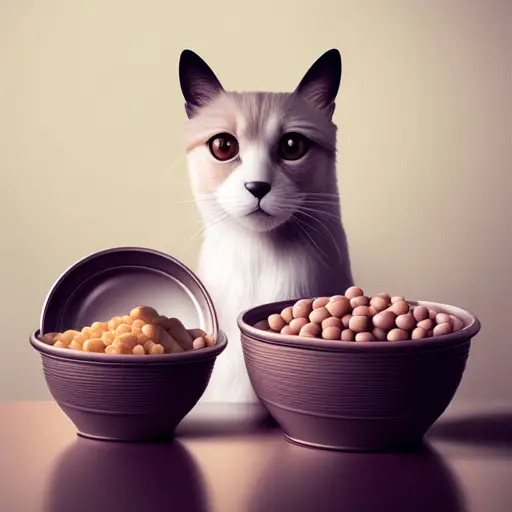
When making the decision between wet and dry cat food, it’s important to consult with your veterinarian. They can provide guidance on what type of food will best meet your cat’s individual needs and preferences.
Additionally, it’s important to introduce new foods gradually and monitor your cat’s health and behavior to ensure they are adjusting well to the change.
Consult with Your Veterinarian
It’s important to consult with your veterinarian before making any major changes to your cat’s diet, such as switching from wet to dry food. Your vet can provide valuable insights into your cat’s nutritional needs and recommend the best type of food for your feline friend. Here are four reasons why you should consult with your vet before making any changes to your cat’s diet:
1. Benefits of regular check-ups: Regular check-ups with your vet can help identify any underlying health issues that may impact your cat’s dietary needs. Your vet can also monitor your cat’s weight and overall health to ensure that they are getting the proper nutrients they need.
2. Importance of communication: Your vet can provide guidance on how to communicate with your cat to ensure that they’re comfortable with any changes to their diet. They can also recommend ways to introduce new foods slowly to avoid any digestive issues.
3. Personalized advice: Each cat is unique and may require a different type of food based on their age, weight, and health status. Your vet can provide personalized advice on the best type of food for your cat’s individual needs.
4. Preventative care: Making sure that your cat is getting the proper nutrients they need can help prevent future health issues. Your vet can recommend a diet that can help prevent common health issues such as urinary tract infections or obesity.
By consulting with your vet, you can ensure that your cat is getting the best possible care and nutrition.
Introduce New Foods Gradually
To properly introduce new foods to your furry companion, gradually incorporate small amounts of the new food into their current diet. This allows their taste buds to adjust and their digestive system to adapt, creating a slow transition for your four-legged friend. Mixing methods are also a great way to make a smooth switch to a new food. You can mix a small amount of the new food with their current food, gradually increasing the amount of the new food while decreasing the amount of the old food.
It’s important to remember that abrupt changes in your cat’s diet can cause digestive upset, including vomiting and diarrhea. So, take your time to introduce new foods and monitor your cat’s reactions. In addition, keep in mind that some cats may be picky eaters, and it may take some time to find the right food that they’ll enjoy.
With a slow and steady approach, you can help your furry friend transition to a new diet with ease.
Monitor Your Cat’s Health and Behavior
Now that you’ve gradually introduced your feline friend to their new diet, it’s important to monitor their health and behavior to ensure they’re adjusting well.
As you transition from dry to wet food, keep a close eye on your cat’s water intake. Since wet food contains a higher percentage of water, your cat may drink less water than usual. This could lead to dehydration if not properly monitored.
To prevent dehydration, look out for signs such as a dry nose, sunken eyes, lethargy, and loss of appetite. If you notice any of these symptoms, encourage your cat to drink more water or consult with your veterinarian.
Additionally, be aware of common misconceptions about wet food such as it causing dental issues or being less nutritious than dry food. In reality, wet food can actually improve dental health and offers a more balanced and nutrient-dense diet for your feline friend.
As you continue to monitor your cat’s health and behavior, remember to provide them with plenty of love and attention. A happy and healthy cat makes for a happy and fulfilled pet owner.
Conclusion
Well, congratulations! You’ve made it to the end of this informative article about wet vs. dry cat food. Now, it’s time to make the all-important decision about what to feed your furry friend.
But let’s be real here, what does your cat even care about? They’re going to eat whatever they want anyways. So, why not just let them choose? Set out both wet and dry food and let them have at it. You might even want to throw in some fancy feast just for good measure.
Who knows, maybe your cat will become a food critic and start writing Yelp reviews about the different brands.
In all seriousness, though, do what’s best for your cat’s health and happiness. And if that means a little bit of both wet and dry food, then go for it. Just make sure to keep plenty of water around, because who knows how thirsty all that food might make them.
